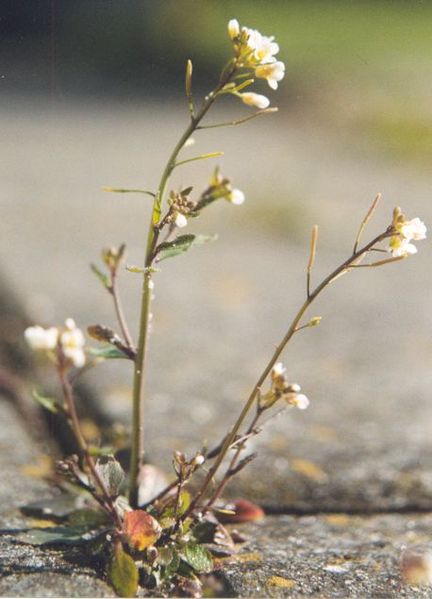We're open daily! View holiday hours
Science News
How Flowers Know it's Spring
December 13, 2010

by Anne Holden
When the days grow longer, temperatures begin to rise, and San Francisco Giants’ pitcher Tim Lincecum throws out the first pitch of the season, I know that spring has arrived in San Francisco. As new leaves appear and flowers begin to bloom, we are certain that winter has left us behind. It’s easy for us to know when spring is here, but what about the trees and flowers themselves? How do they know when to drop their leaves, and when to bloom?
Scientists believe they’ve discovered a special molecule in plants that gives them the remarkable ability to “remember” winter and to bloom on schedule in the spring. Their results are reported in the December 2 issue of Science Express.
Sibum Sung, molecular biologist at the University of Texas and one of the paper’s authors, was searching for a mechanism that allows plants to recognize spring and - more importantly - distinguish between spring and a brief warm spell during winter. The key, Sung found, was the plants’ ability to remember that winter had passed.
“Plants can’t literally remember, of course, because they don’t have brains,” says Sung. “But they do have a cellular memory of winter, and our research provides details of how this process works.”
The process Sung referred to is called “vernalization.” It allows a plant to properly come out of hibernation during winter so that it can bloom. But experts have never really understood the genetic basis for how vernalization worked.
Until now. Sung and his co-author Jae Bok Heo dug deep into the DNA of arabidopsis, a small flowering plant related to mustard and cabbage. As they scoured the lines of genetic code, they discovered that arabidopsis’ DNA coded for a molecule they called COLDAIR.
The authors’ experiments revealed that while the plant hunkers down for the winter, COLDAIR is switched off. After 20 days of consistent freezing temperatures, COLDAIR gets switched on. This begins the 10 to 20 day process of preparing the plant for spring. Once complete, the plant is ready for warm temperatures, and other pieces of genetic code help the plant to bloom.
As many of us know, this system isn’t perfect. Sometimes flowers do bloom early, and they pay the price when temperatures quickly return to freezing. But over millions of years of evolution, COLDAIR has helped create a kind of “memory” in generations of plants, telling them when there’s been at least a month of cold and that spring might be just around the corner.
Of course, many questions remain. Sung admits they still don’t have the other pieces of the puzzle, like how does the plant know it’s been at least 20 days of cold temperatures? “That is one of the next questions we have,” he says. “How do plants literally sense the cold?”
The particular mechanisms require further study, but as long as COLDAIR keeps working, flowers will give us one more sign when spring has sprung.
Anne Holden, a docent at the California Academy of Sciences, is a PhD trained genetic anthropologist and science writer living in San Francisco.
Image by Roepers/Wikimedia